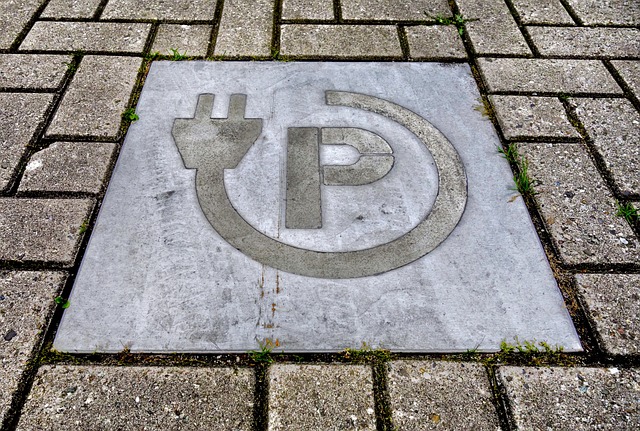
As we discussed in Part One and Part Two of this series, new petrol and diesel cars are due for the chop in 2030. If the current legislation remains in place, by 2030, the only new cars available will be powered by electrons (assuming that the ban extends to plug-in electric hybrids).
This time, we’ll look at one of the biggest questions that many car owners are asking: is the infrastructure going to be ready?
EV sceptics and EV advocates have two completely different visions of what 2030 is going to look like. The sceptics see an infinite queue of Teslas at every motorway service station, then waiting for hours while a rickety charger adds 10 miles to their range. EV fans look forward to charging at home, with the occasional top-up from high-speed chargers while they grab a latte.
Who’s right? Essentially, that’s going to come down to the numbers, so let’s start there.
The stats right now
- As of July 2024, there were 1.2 million fully electric cars on UK roads, with a further 700,000 plug-in hybrids.
- That’s roughly 3.5% of all the cars on UK roads, or 5.6% including hybrids.
- There are 54,000 public charging stations, so about 1 per 18 fully electric vehicles*
- There are about 680,000 domestic and work charging points
*This is the Financial Times’ estimate. They’re working off a slightly lower figure of 1 million electric cars.
Is it enough? That depends on where you are
Last year, the former EV-sceptical Top Gear published an article concluding that the lack of adequate infrastructure was a myth. However, that depends crucially on the EV owner’s location and travel habits. It’s no surprise to find there’s a big difference between urban areas and the rest of the country. According to the County Councils Network:
…there is still only one charger for every 9.5 miles in England’s county areas on average – significantly worse than London average (one charger for every 0.7 miles), inner London (one charger for every 0.3 miles), England’s 25 biggest cities (one charger for every 3.7 miles) and metropolitan borough areas (one charger for every 4.5 miles).
OK, but EV ownership is higher in cities, so doesn’t it all balance out? Not so, says the CCN:
This ratio is holding back drivers in county areas switching to electric vehicles, the report argues. There are just over 13,500 publicly-available chargers in county areas, with London having almost the same amount (13,300) despite its population being significantly smaller to England’s 38 counties. Those county areas have 70% of England’s road miles.
Outside of England, it’s a similar story. Back in 2022, a BBC journalist concluded that driving an EV from South to North Wales was “frustrating… but possible”, though in fairness, the situation is quickly changing.
At any rate, this patchy distribution of chargers means drivers in different parts of the country have completely different perspectives on infrastructure.
The 2030 charging targets
By 2030, it’s estimated that about one-third of all UK cars on the road will be fully electric – about 6.4 million vehicles. By then, the government plans to have 300,000 public charging points – which works out to about one charger for 21.2 cars – roughly the same ratio as we have now.
That may not seem too promising if the present ratio isn’t working for everyone. However, remember that:
- as faster charging points are added, they can charge a greater number of cars per hour.
- EV range is increasing, decreasing the competition for chargers.
- The number of home and work chargers will also increase.
On the last point, a government report from 2021 suggests that growth in home chargers has fewer barriers than those facing public chargers. And as EV adoption increases, workplaces are starting to compete with each other to offer EV charging as a perk.
So, are we going to make the targets?
There are 54,000 chargers now and we need 300,000 in six years time.
That sounds like a mountain, but the UK is starting to climb faster. 2023 saw 10,00 chargers added – an increase of 45% from the previous year. A 2023 report from New Automotive concludes that at this rate of increase, we will hit the 300,000 mark by 2030. The Financial Times is even more optimistic, suggesting that we’ll reach it by 2028 – though the FT notes that as the market becomes saturated, the speed at which we can add extra chargers will slow down.
Overall, then, things are looking positive. But what we don’t want is the present distribution carrying forward – a postcode lottery where the average figure conceals abysmal coverage in some areas.
Also, let’s not forget that one-third of drivers don’t have access to private or off-street parking and therefore can’t charge at home. Though actually, things are more hopeful on that score than you might think – we were amazed to find that 37% of all public chargers are on residential streets.
Several of our sources point out that the biggest factor in making all this work is stability. If the EV mandates stays in place, private companies will plan for that demand and install chargers. If it’s reversed or delayed, there’s less reason for them to do so.
Anyway, as usual, watch this space – but we feel a bit more optimistic about the situation than when we started researching this!
Whenever the EV switchover happens, for the foreseeable future WVS will still be here bringing great levels of service for car owners in the Cardiff and South Wales area. WVS provides services, repairs and MOTs, delivering a main dealer level of care at affordable prices. To book your vehicle in, or for any enquiries, get in touch.
